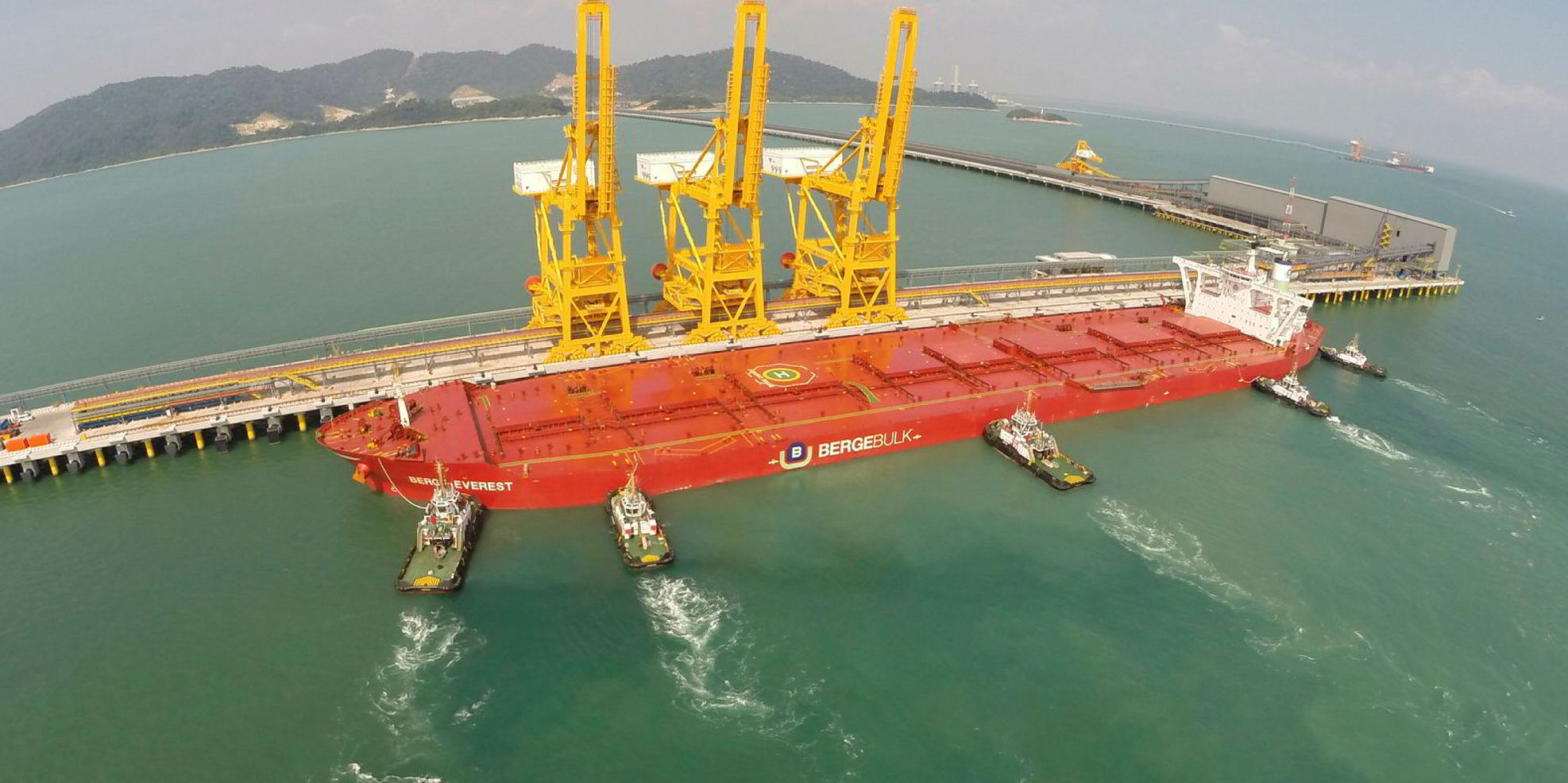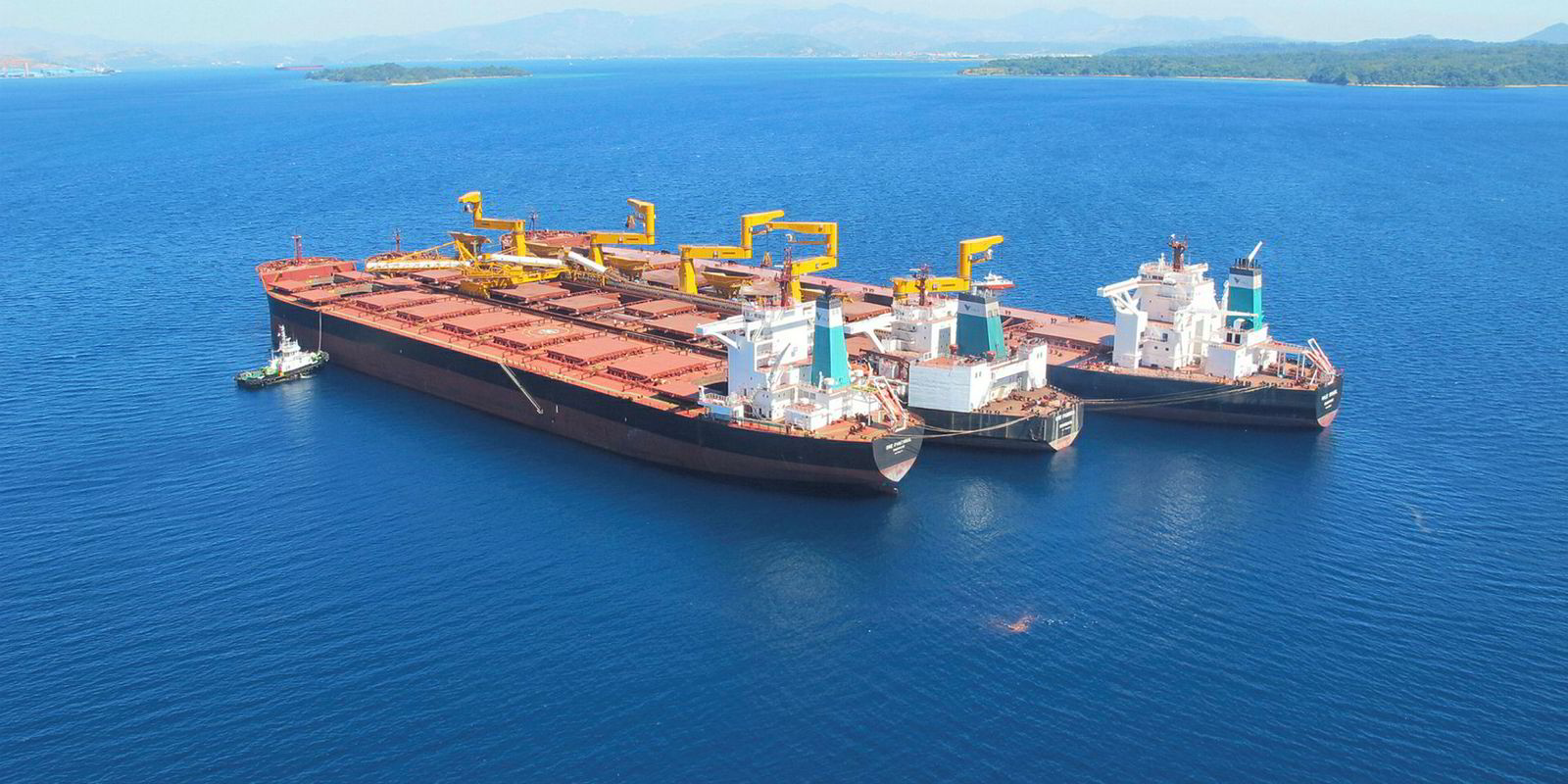Shipowners savouring the highest capesize spot rates in half a decade are set for a further shot in the arm as Vale’s fleet of giant ore carriers heads to dry dock for scrubber installation, according to Braemar ACM.
Vale revealed last year it was planning to fit scrubbers on all of the 48 ships in its third generation of ore carriers.
It was also mulling installing the kit on the 67 vessels in the first and second waves of Valemax vessels.
James Johnston of Braemar ACM said: “Undoubtedly, the loss of VLOCs through the next six months or so will help the balance of the cape market, with vessels being fixed in to replace temporarily curtailed VLOC capacity.
“That is especially the case now that shipped iron ore volumes have returned to the levels we were seeing in the second half of last year, even with Vale’s output from the southern system still constrained.
The analyst added: “We’ll be keeping a close eye on the movements of the VLOCs and how long they are spending in shipyards, with the changing dynamics key to the development of the market.”
Capesize rates got off to a slow start in 2019, having been curtailed by a slowing Chinese economy and the collapse of a Vale dam, which restrained the mining giant’s exports.
In the second quarter, capesize rates averaged just $9,000 per day, the lowest since the record lows seen in 2016, according to US investment bank Jefferies.
However, with the Brucutu iron ore mine back online, fixtures have surged, helping to push capesize rates to $32,000 per day, the highest since 2014.

Braemar ACM counts 119 VLOCs of more than 297,000 dwt delivered since 2008, including 61 Valemaxes. Of that vast fleet, only 19 of the modern ore carriers have scrubbers, of which 10 are Valemaxes.
- The first generation Valemax fleet ran to 35 ships, delivered between 2011 to 2017
- A second generation of 32 vessels will be delivered by the end of 2019
- The third round of 48 bulkers, of which 47 are 325,000-dwt guaibamax vessels, are also starting to hit the water
The tally includes three newbuildings, which went directly from the shipyard to dry dock, and 10 trading ships that have been retrofitted this year.
Three further VLOCs are in yards right now having scrubbers installed.
Braemar ACM calculated the yard work has taken between 17 and 40 days, with an average of 28 days.
This means original expectations for two to three weeks of downtime per vessel were over-optimistic, the brokerage said.
Johnston said if the entire Valemax fleet is to be retrofitted by the end of this year, there are still another 48 ships that need to have scrubbers installed in just five-and-a-half months.

“At 25 days each, that is a total 1,200 trading days that will be lost, 15% of the available operating time — an estimate that still doesn’t account for time lost diverting to reach the yard,” he said.
“Offsetting some of this loss of capacity is the fact that not all the vessels are likely to be retrofitted, plus some work will likely spill over into 2020.”
At the same time, five extra Valemaxes and the same number of the smaller Guaibamaxes ships are slated for delivery this year.
In 2020 two extra Valemaxes and 22 Guaibamaxes will float out of the world’s shipyards.
“Also making up the balance is a considerable cape and newcastlemax capacity that still needs to be delivered
“The schedule shows 39 such vessels to come in the remainder of the year, against 16 in the first half of 2019.
“Given where rates are, there is likely to be pressure from owners to get these ships launched as soon as possible to take advantage of the market,” Johnson said.
Jefferies now projects capesize spot rates of $15,500 per day this year and $20,000 per day in 2020.
This is up from the $12,500 per day and $16,000 per day, respectively, that was forecast before the summer surge.






